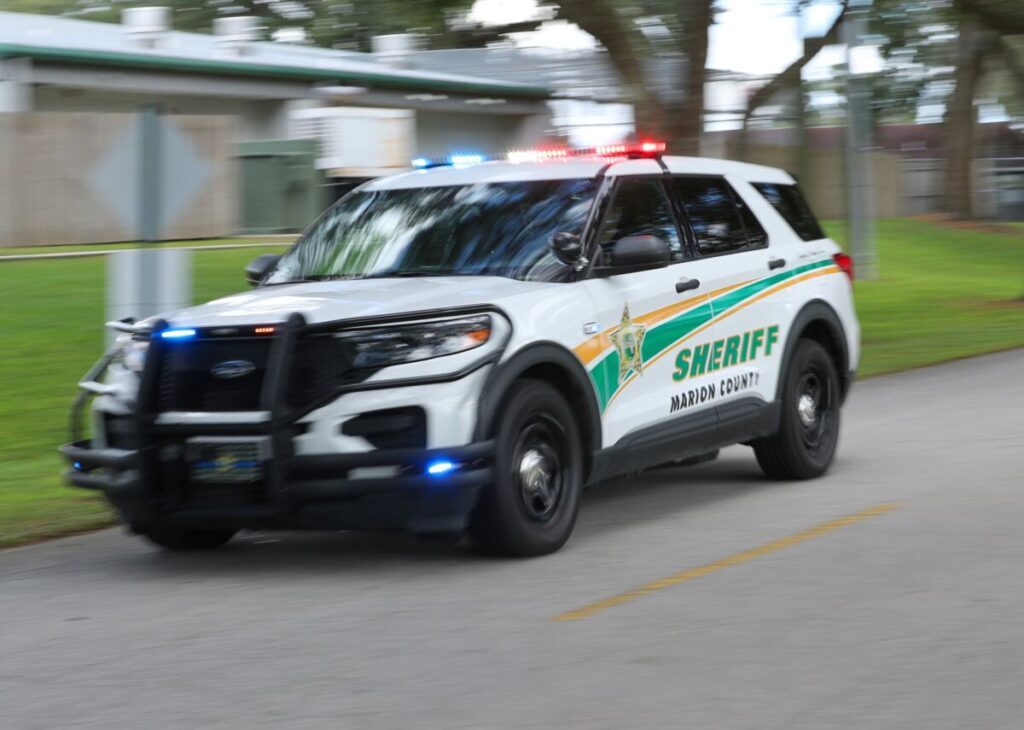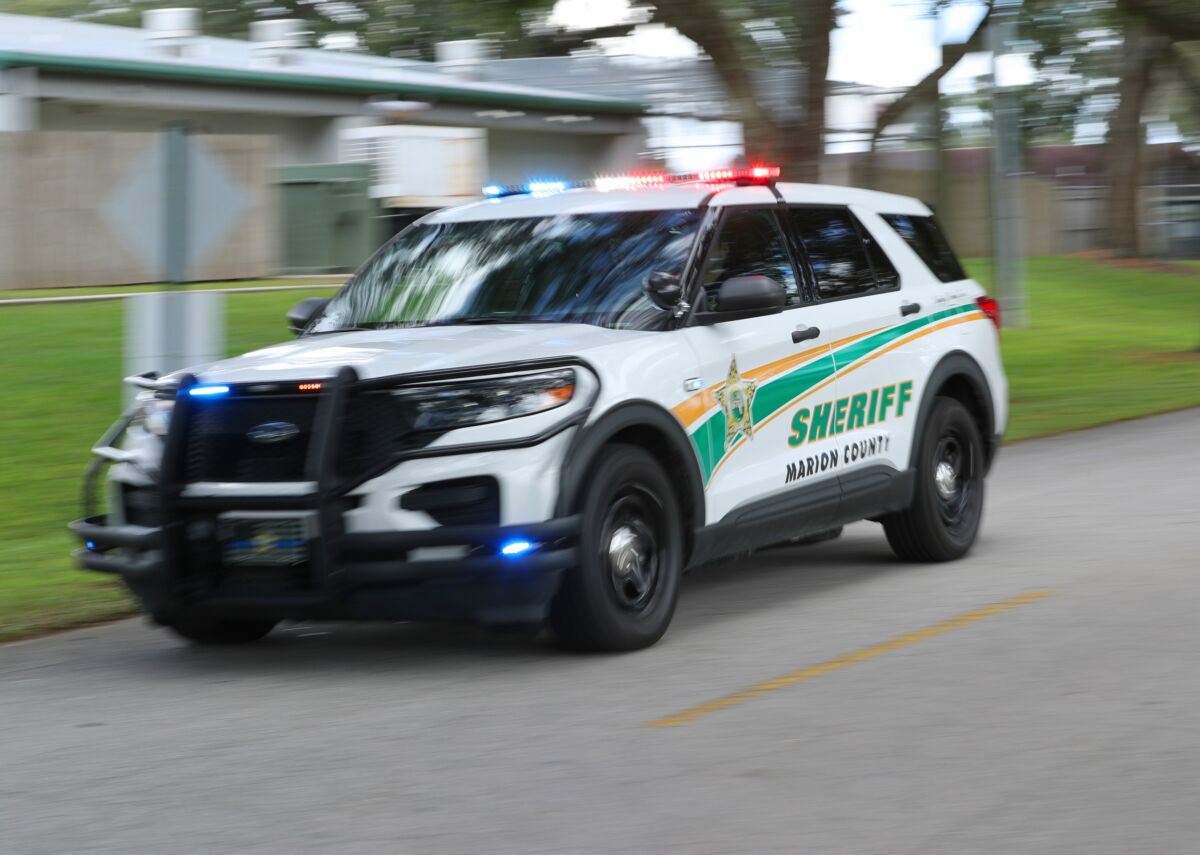What I learned studying local agencies’ response times

File photo: A Marion County Sheriff’s Office vehicle responding to a call on Monday, Oct. 11, 2021. [Bruce Ackerman/Ocala Gazette] 2021.

Sgt. Paul Bloom, the director of the public information office, drives a marked unit with it emergency lights turned on at the Marion County Sheriff’s Office in Ocala, Fla. on Monday, Oct. 11, 2021. [Bruce Ackerman/Ocala Gazette]
The idea for the series was borne from two things. One, concern about the rate of development our community has been experiencing through the years. We hoped these articles would give the public some baseline for understanding how our community’s growth was impacting law enforcement’s ability to respond.
And secondly, curiosity born following two reports I had issued on how the Penny Sales Tax had been spent on the city and county levels. We wanted a way to determine whether the gear and vehicles that the city and county purchased for first responders was adding to their efficacy levels.
Initially, it seemed like an easy enough comparison.
Once I began to research and understand the nuance behind the response numbers, however, I quickly learned that an apples-to-apples comparison would be difficult because each agency has considerations and scope of duties different than the others.
One example of this dynamic was found in attempting to compare Ocala Fire Rescue (OFR), the agency tasked with providing fire/EMS services within the Ocala city limits, and Marion County Fire Rescue (MCFR), which is responsible for EMS/fire service to the more rural, unincorporated portions of the county. Because their coverage areas are different, the two departments utilize different response standards.
While OFR and MCFR use different standards to measure their response times, the law enforcement agencies in Ocala and Marion County do not have a similar uniform standard, and as such, both the Ocala Police Department (OPD) and the Marion County Sheriff’s Office (MCSO) set their own standards of effectiveness.
Both OPD and MCSO also share a similar, lengthy hiring process. While the agencies are not currently suffering from an overwhelming staffing shortage, even a gap in acceptable personnel levels can cause response times to fluctuate, as getting new recruits and hires on the road is a slow process for both agencies.
One constant between the four different agencies was the desire to see residents educate themselves and take mitigation steps that might reduce or eliminate the need to call 911.
Fire mitigation strategies such as installing smoke detectors, clearing flammable hazards away from houses and structures, and keeping a working fire extinguisher will not make rescue services arrive any faster, but they can absolutely protect residents dealing with a fire.
Further, keeping houses and cars locked and valuables secured may deter or prevent a robbery. Trimming bushes away from doors and windows may prevent a break-in. And responsible, safe gun ownership may provide a level of personal safety and security, even as law enforcement works to respond as quickly as possible.
Another similarity all four shared was the desire to respond to an emergency as quickly, but also as safely as possible. All four agencies noted their response times were important, but the safety of other drivers on the road, and their crews are equally, if not more important.
COVID, too, played a role–although not the same one across all departments. For some agencies, such as OPD, officers missing time as a result of a positive COVID diagnosis led healthy officers to work more overtime in order to ensure shifts were covered.
For MCSO, COVID also led to an increase in domestic violence incidents, as residents were locked down and unable to travel as they would in pre-pandemic times. And while the number of calls rose, the response times were expected to stay the same.
One future consideration, as both the city and county look to expand in residential and commercial areas, is how the growth will be managed by the law enforcement and EMS agencies. Response times can help determine where a new police or fire station would best be placed, or if sectors or zones need to be re-drawn.
While the different considerations of each agency make a direct comparison of the numbers nearly impossible, what can be compared is the percentage of calls that meet whatever standard an agency has set.
While I believe these agencies should be held accountable for their effectiveness, or lack thereof, I also think those making decisions for exponential growth of Ocala should be held accountable for how their decisions impact the response rates the rest of us come to expect. I’m guessing that the general public feels as I do, that we don’t want less services, or slower services, because we’ve added a lot more to the mix.
With that in mind, any future exercise in accountability that includes response times must take into consideration the nuance and different considerations that go into reviewing them.
I should note that, while putting together this series, we were dependant on the figures provided by the different agencies. We operated on the good-faith assumption that the numbers provided were complete, accurate, and representative of the timeframes we requested. To be clear, we have no reason to believe the numbers provided to us were anything other than what they were presented to be.
Finally, regarding the MCSO anecdote about a resident who called 911 to report a rooster in their yard: As someone who owns a rooster, I can fully attest that, depending on how ornery the rooster was acting, it could have easily necessitated a priority-one call!





